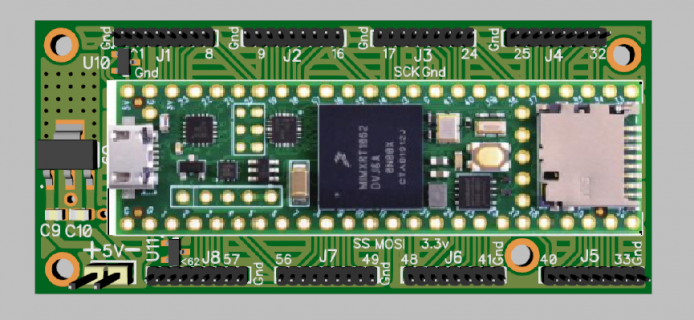nigel.epsom
Member
Hello
I am a newby and this could possibly be a dumb question, appologies.
I am transitioning from an Arduino Due based project to using a Teensy40, basically because of the smaller footprint. (But I have to admit it is a very sweet device!)
On the Arduino project I currently use an input voltage of 7.5V that is regulated down to 3.3V on the Due board. I then use this 3.3V from the Due to power a whole heap of other chips for my project. The Due allows up to 800ma draw. I use a 7.5V supply as this is required elsewhere in my project.
With the Teensy40 it looks different. The max input voltage is 5.5V and the max draw on the 3.3V line is 250ma.
My question is:
Can I use one regulator, 7.5 to 3.3V to supply both the Teeny and my other chips? (i.e. no Vin supplied to the Teensy - there will be no USB connection.)
OR
Must I use two regulators 7.5 to ~5V for Teensy Vin AND 7.5V to 3.3V for my chips?
The question boils down to: can the Teensy40 run from only a 3.3V input?
Many thanks for your patience in getting this far. Thanks for any help.
Nigel
I am a newby and this could possibly be a dumb question, appologies.
I am transitioning from an Arduino Due based project to using a Teensy40, basically because of the smaller footprint. (But I have to admit it is a very sweet device!)
On the Arduino project I currently use an input voltage of 7.5V that is regulated down to 3.3V on the Due board. I then use this 3.3V from the Due to power a whole heap of other chips for my project. The Due allows up to 800ma draw. I use a 7.5V supply as this is required elsewhere in my project.
With the Teensy40 it looks different. The max input voltage is 5.5V and the max draw on the 3.3V line is 250ma.
My question is:
Can I use one regulator, 7.5 to 3.3V to supply both the Teeny and my other chips? (i.e. no Vin supplied to the Teensy - there will be no USB connection.)
OR
Must I use two regulators 7.5 to ~5V for Teensy Vin AND 7.5V to 3.3V for my chips?
The question boils down to: can the Teensy40 run from only a 3.3V input?
Many thanks for your patience in getting this far. Thanks for any help.
Nigel



